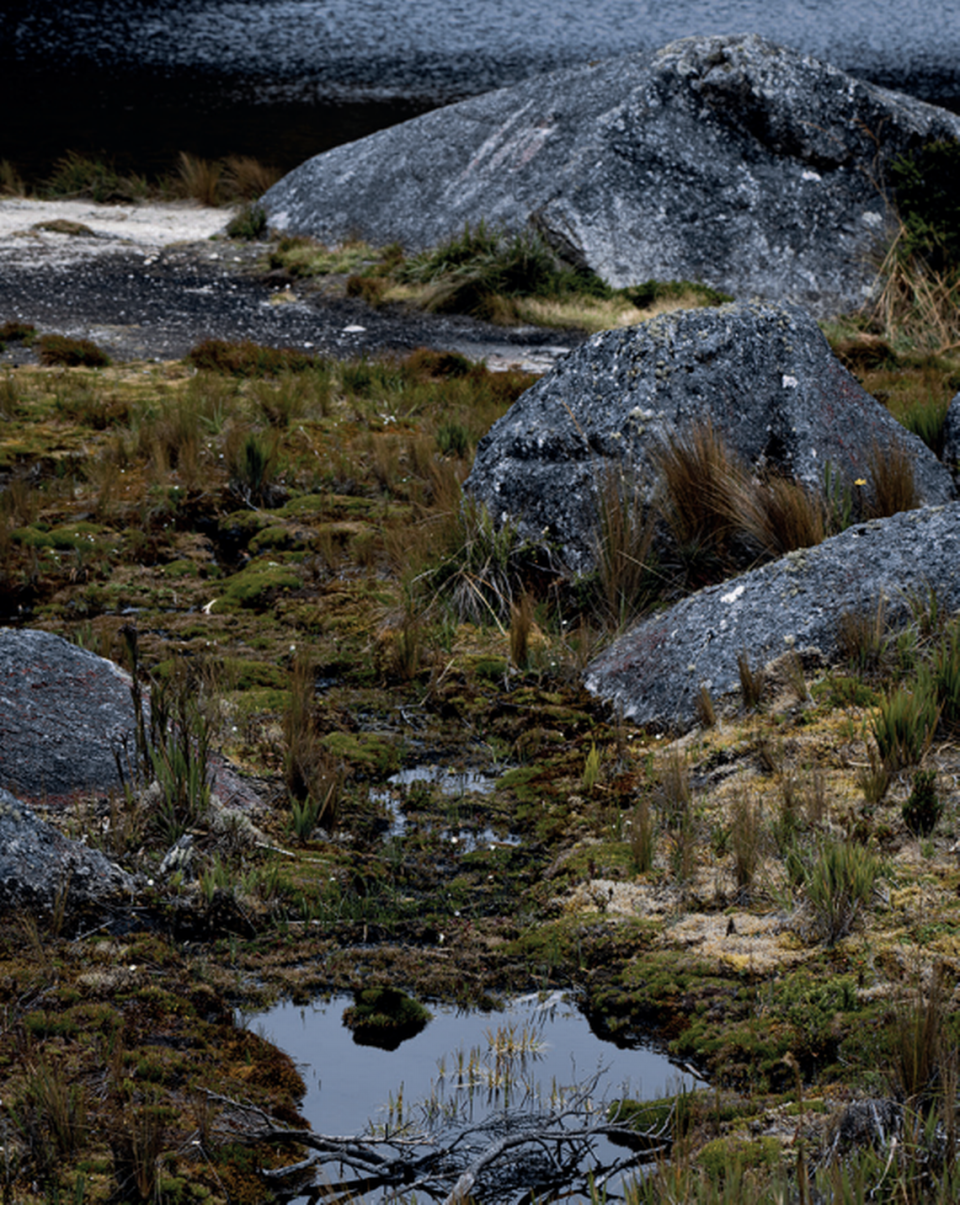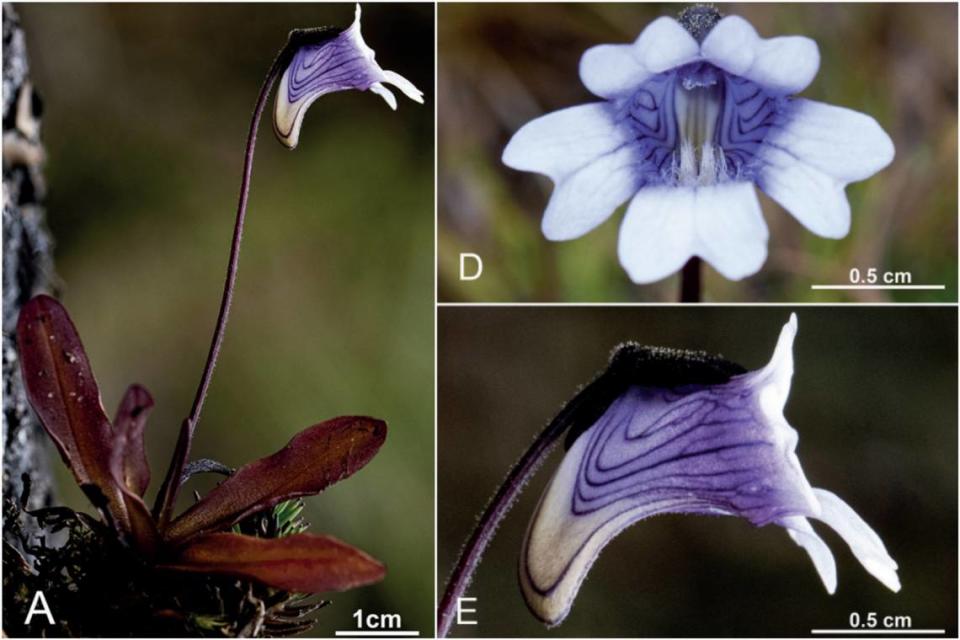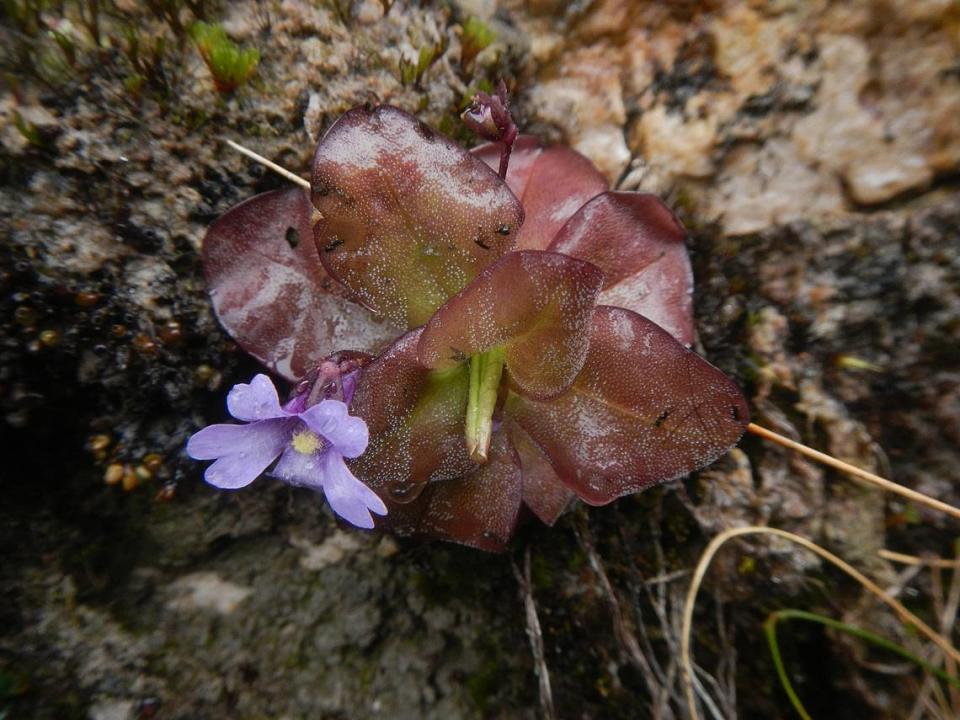‘Striking’ pair of carnivorous plants discovered on mountains in Ecuador
Correction (March 27): An earlier version of this article incorrectly described where each species was located.
Corrected article continues below:
While exploring an isolated lagoon in the mountains of Ecuador, researchers found several colorful plants — one of which was a new species.
The joint team of Ecuadorian, U.S. and German researchers found “two striking new species” of carnivorous plants growing near a lagoon and on a mountain in southern Ecuador, the researchers said in a study published March 24 in PhytoKeys journal.
The lagoon, Lagunas Negras de Jimbura, is nestled at the summit of a table-top mountain in a portion of the Andes mountain range. The mountain is situated about 50 miles east in the Cerro Plateado Biological Reserve. The region — stretching from southern Ecuador into northern Peru — is known for its “exceptional biodiversity,” the study said.
Among the area’s lesser-studied plants are the butterworts, also known as the Pinguicula. Butterworts are carnivorous plants that digest small insects that get stuck to their slimy leaves, according to the Wisconsin Department of Natural Resources.
About 115 species of butterworts have been identified, with the largest portion of this diversity centering on Mexico, the study said. Only a handful of butterwort species have been identified in Ecuador, but the researchers thought the “mosaic-like microhabitats of the Andes” could hide previously unknown species.

The colorful plants growing around the Lagunas Negras de Jimbura and Cerro Plateado Biological Reserve proved them right.
The researchers identified one of the new species as Pinguicula jimburensis, a nod to the lagoon area where it was discovered, researchers said in the study. Photos show the long, skinny red stalk of the plant and its bright purple-white flower.
The Pinguicula jimburensis’ flower has white petals leading into a funnel-shaped tube trap, the study said. Seen straight on, the opening of the flower appears to have a central “tooth” similar to that of predatory mammals, researchers said.

This butterwort species was found growing among thegrass in the swampy areas near the lagoon. Photos show the white-purple flowers sprouting up from other yellow and green plants.

The other new species was named Pinguicula ombrophila, the study said. The new plant’s name means “rainloving” in Latin and refers to the mountain habitat where it was found. Photos show the plant’s green center and purple-brown leaf-like parts with a small, pastel purple flower growing upward.
The Pinguicula ombrophila was discovered growing on bare rock walls, the study said. It grows to about 1.5 inches in length and a similar width.

Because the two species live near other butterwort species, they may compete for insect prey, the study said. Researchers theorized the different colors and shapes of the flowers may attract different prey, but more research is needed to evaluate this theory.
Scientists assessed both new butterworts to be vulnerable species, the study said, and recommended further research into Ecuadorian butterworts.
Lagunas Negras de Jimbura is part of Yacuri National Park in southern Ecuador. The lagoon is about 480 miles south of Quito, the capital city, and very close to the Ecuador-Peru border.
‘Beautiful’ fish with vibrant lavender and yellow coloring is new species. Take a look
Stunned biologist looks into tortoise hole to see alligator ‘smiling back’ in Georgia
Creature of island mythology is real — and a new species, researchers in France say


